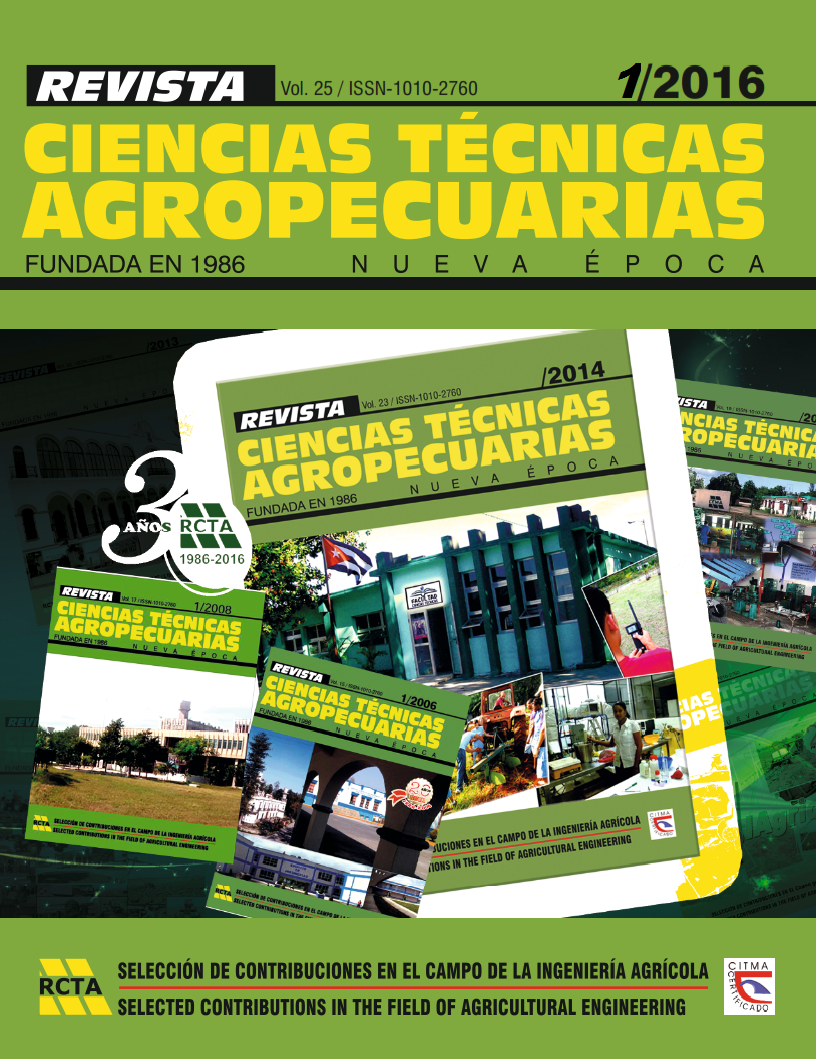Evaluación del estado trófico del Lago de Izabal, Guatemala
Main Article Content
Abstract
de cambio de uso de la tierra, principalmente cuando bosques secundarios son convertidos en áreas agrícolas de agro exportación, por lo que
reviste suma importancia el monitoreo de la calidad de los cuerpos de agua. En el caso del Lago de Izabal, esto se ha instaurado bimestralmente
por la Autoridad para el Desarrollo Sustentable de la Cuenca del Lago de Izabal y del Río Dulce (AMASURLI). En la investigación se
evaluó el estado trófico del agua del lago basado en el índice de Carlson, utilizando el registro histórico de la concentración de fósforo total
en muestras de 22 puntos de afluencias durante el período 2005-2014. Se concluyó que el Lago de Izabal se encuentra en un estado eutrófico y
presenta una tendencia a mejorar su estado trófico en época lluviosa, siendo las zonas en estado trófico avanzado Río Polochic, por actividad
agrícola intensiva; Jocoló, por la minería; y Playa Dorada por actividades habitacionales y turísticas.
Article Details
Those authors that have publications with this journal accept the following terms:
1. They will retain their copyright and guarantee the journal the right of first publication of their work, which will be simultaneously subject to the License Creative Commons Attribution-NonCommercial 4.0 International (CC BY-NC 4.0) that allows third parties to share the work whenever its author is indicated and its first publication this journal. Under this license the author will be free of:
• Share — copy and redistribute the material in any medium or format
• Adapt — remix, transform, and build upon the material
• The licensor cannot revoke these freedoms as long as you follow the license terms.
Under the following terms:
• Attribution — You must give appropriate credit, provide a link to the license, and indicate if changes were made. You may do so in any reasonable manner, but not in any way that suggests the licensor endorses you or your use.
• NonCommercial — You may not use the material for commercial purposes.
• No additional restrictions — You may not apply legal terms or technological measures that legally restrict others from doing anything the license permits.
2. The authors may adopt other non-exclusive license agreements to distribute the published version of the work (e.g., deposit it in an institutional telematics file or publish it in a monographic volume) whenever the initial publication is indicated in this journal.
3. The authors are allowed and recommended disseminating their work through the Internet (e.g. in institutional telematics archives or on their website) before and during the submission process, which can produce interesting exchanges and increase the citations of the published work. (See the Effect of open access).
References
CUDE, C.: “A tool for evaluating water quality management effectiveness”. Journal of the American Water Resources Association, E-ISSN:
-1688 37, 1: 125–137, 2001.
DE VICENTE, I. y L. CRUZ: “Estudio de la carga externa e interna de fósforo y aplicación demodelos empíricos de eutrofización en las aguas
de la Albuferade Adra”. Limnetica, ISSN: 0213-840922, 22(1-2): 165-181, 2003.
FRUMIN, G. y Z. KHUAN: “Trophic status of fresh-water lakes in China”. Russian Journal of General Chemistry, ISSN: 10703632, 81(13):
-2657, 2011.
GARCÍA, G.; F. PARRA; F. GUERRERO y J. LUCENA: “Sedimentation and phosphorus fractions and temporal variation in the C:P ratio in La
Concepción reservoir, southern Spain”. New Zealand Journal of Marine and Freshwater Research, ISSN: 0028-8330, 35(1): 711-723, 2001.
IARNA-URL: Perfil Ambiental de Guatemala 2010-2012. Vulnerabilidad local y creciente construcción de riesgo.Guatemala:440pp., Instituto
de Agricultura, Recursos Naturales y Ambiente de la Universidad Rafael Landívar.Serie Perfil Ambiental No. 12. ISBN: 978-9929-587-
-7. Guatemala. 2014.
LUGIOYO, G.; M. MIRAVET, R. Pérez; C. Álvarez y G. ESPINOZA: “Evaluación del estado trófico de las aguas oceánicas adyacentes al sur de
Cuba a partir de indicadores microbiológicos y fitoplanctónicos”. Revista de Investigaciones Marinas, ISSN: 02521962, 28(3): 201-207, 2007.
LUKAWSKA, K.; R. VOGT y R. XIE: “Phosphorus pools and internal loading in a eutrophic lake with gradients in sediment geochemistry
created by land use in the watershed”. Hydrobiologia, ISSN: 00188158, 713(1): 183-197, 2013.
MORENO, D.; J. QUINTERO y A. LÓPEZ: “Métodos para identificar, diagnosticar y evaluar el grado de eutrofia, Contactos, ISSN: 0186-
, 78(1): 25–33, 2010.
OZEN, A; B. KARAPINAR; I. KUCUK; E. JEPPESEN y M. BEKLIOGLU: “Drought-induced changes in nutrient concentrations and retention
in two shallow Mediterranean lakes subjected to different degrees of management”. Hydrobiologia, ISSN: 00188158, 646(1): 61-72, 2010.
ROBLEDO, J.; E. VANEGAS y N. GARCIA. “La calidad del agua del lago de Izabal, Guatemala. Relaciones temporales y espaciales de variables
físico-químicas y biológicas”. Revista Ciencias Técnicas Agropecuarias, ISSN: 1010-2760, E-ISSN: 2071-0054, 23(4): 28-32, 2014.
ROLDAN, G. y RAMIREZ, J.: Fundamentos de limnología neotropical, Ed. Universidad de Antioquia, ISBN: 958714144X, Antioquia, Colombia,
SANTIAGO, E. y A. VIGNATTI: “Determinación del estado trófico y de la capacidad de carga del embalse Casa de Piedra”. BioScriba, ISSN:
-4639, 2(1): 41-51, 2009.
SONDERGAARD, M.; J. JENSEN y E. JEPPESEN. “Retention and Internal Loading of Phosphorus in Shallow, Eutrophic Lakes”. TheScientificWorld,
ISSN: 1532-2246, 1: 427–442, 2001.
